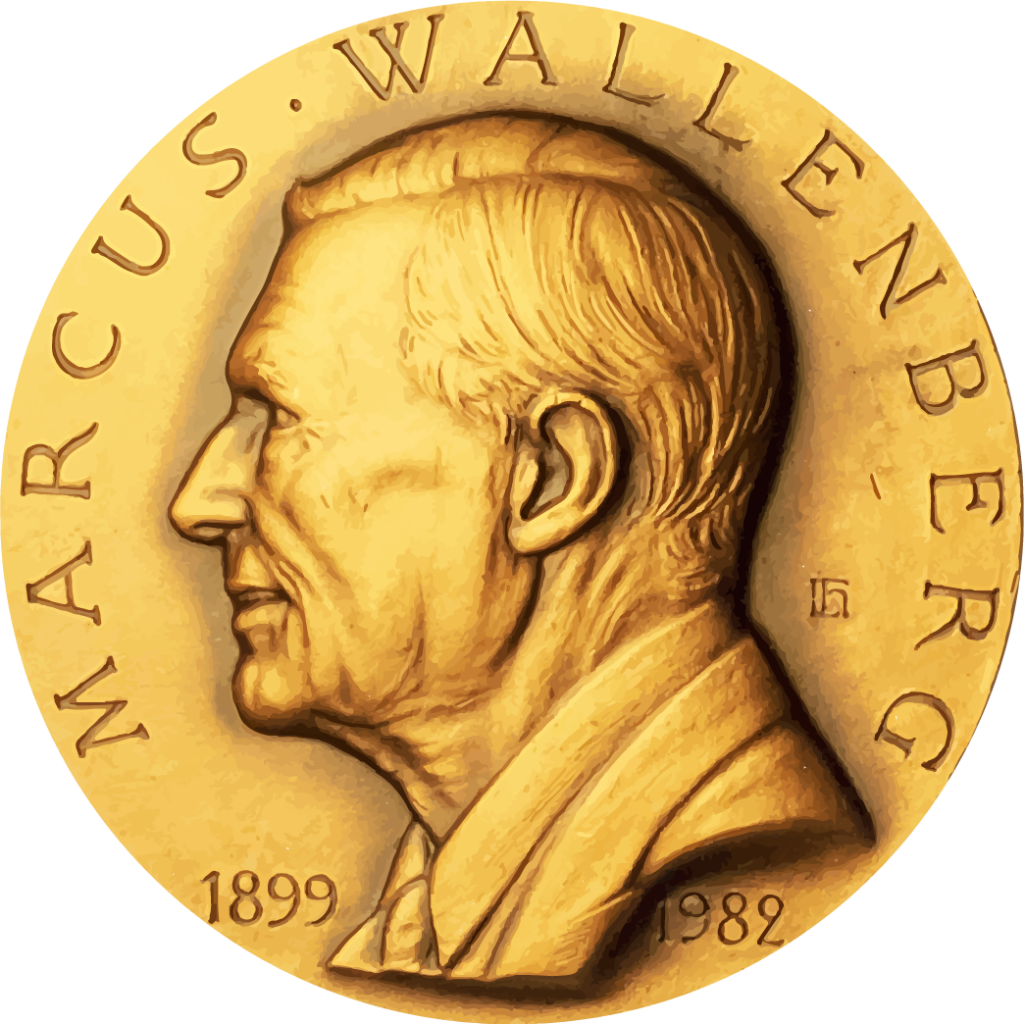Mikael Hannus, the new Executive Secretary of the Marcus Wallenberg Prize, wants to spread the events over the whole year and identify new target groups in both society and academia.
Mikael Hannus was forced to adapt all activities to the Corona pandemic less than a month after his appointment as Executive Secretary of the Marcus Wallenberg Prize. The announcement of the 2020 prize-winners, Joseph J Landsberg, Richard H Waring and Nicholas C Coops, was only published digitally and not in any public context, as is traditional. The award ceremony, which was to have taken place last autumn, is being moved to October 2021.
Likes to think in new ways
Being forced to redraw the map is a challenge that suits Mikael Hannus, the Senior Vice President of Group Innovation, Research and Development at Stora Enso. He has great respect for the traditions that have been established since the first Marcus Wallenberg Prize was awarded in 1981, but is at the same time open to changes that are able to unite science and the forest industry in completely new contexts.
– I hope it will be possible to extend awareness of the Marcus Wallenberg Prize beyond the activities associated with the award ceremony, he says.
Among other things, he hopes that previous prize-winners will be willing to participate in seminars that could be spread out throughout the year. Participants in the programme for young researchers can also contribute in various ways.
– We have an impressive list of prize-winners and young researchers who are important advocates for the Marcus Wallenberg Prize. It is the largest and most prestigious prize for forest-related research in the world, says Mikael Hannus.
The company’s ethical principles
Mikael Hannus grew up in Närpes in Finnish Österbotten and studied for a Master of Science in chemical wood processing technology at Åbo Akademi University. After a couple of years as a project engineer at a small Finnish company, he joined Stora Enso, where he was eventually assigned the task of implementing the company’s ethical principles.
– Formulating the concepts of the company’s social responsibility was an interesting task for an engineer who was used to working on production-related improvements. I realised that this was an area that would receive more attention in the future.
Green certificates, emissions trading and energy efficiency were issues that Mikael Hannus would deal with in his role as Head of Energy. That led to work on new technology and contacts with start-ups – not only in Sweden – which focus on renewable materials.
He has been a member of the board of the Wallenberg Wood Science Center since 2014 and is constantly reminded of how effective, long-term funding produces high-quality research results that can stimulate the forest industry.
Mikael Hannus was encouraged to apply for the position as Executive Secretary of the Marcus Wallenberg Prize and is extremely grateful that he was entrusted with the assignment, which he is able to combine with his post at Stora Enso.
– The Marcus Wallenberg Prize is perceived by many as the forest industry’s equivalent of the Nobel Prize. It is a position that needs to be constantly nurtured and adapted to conditions and changes in the scientific community. Even if something works well, you must stay alert and be prepared to innovate.
Most at home in the forest
During his free time, Mikael Hannus goes to the forest in Österbotten that he and his wife Annika purchased to one day hand over to their children Axel, 16, and Emilia, 13. The family also includes the puppy Eddie, a four-month-old Lagotto.
– Our forest consists mainly of pine, spruce and some birch. I like to go in with the brush-cutter to generate better growth. Rejuvenation areas are also beautiful in their own way. Raspberries are beginning to grow, and eventually blueberries and lingonberries that we can pick and freeze. My role models from childhood were farmers and foresters and I am also something of a collector, though I haven’t started to hunt yet. I’m interested, but I haven’t got around to it. Let’s see if I can do it with my son or daughter in a few years’ time.
——————————————————————————————
| The Marcus Wallenberg Prize is an international prize which is awarded once a year for a scientific breakthrough of great importance to forestry and the forest industry. The prize was founded to honour Marcus Wallenberg, 1899-1982, who was one of Sweden’s important industrialists. He was CEO of Stockholms Enskilda Bank, now SEB, and had a large influence on several of Sweden’s big companies during the 20th century. |
——————————————————————————————
Marcus Wallenberg Prize Winners 2015 – 2020
- 2015: Akira Isogai and Tsuguyuki Saito, Japan, Yoshiharu Nishiyama, France – TEMPO-mediated production of nanofibrillated cellulose.
- 2016: Alexander Katsevich, USA and Federico Giudiceandrea, Italy – tomography for whole tree logs.
- 2017: Ronald R. Sederoff, USA – new methods for gene discovery in conifer species.
- 2018: Torgny Näsholm, Sweden – an environmentally friendly fertiliser for the forest.
- 2019: Gerhard Schickhofer, Austria – research on cross-laminated timber, CLT.
- 2020: Joseph J Landsberg, Australia, Richard H Waring, USA and Nicholas C Coops, Canada – a model that is able to predict forest growth in a changing environment.


